Capitol Studios of L.A.: An Iconic Recording Studio Still Going Strong in its 60th Year

The iconic Capitol Records Tower in Los Angeles California. Photo credit: John Piro/Capitol Music Group
When Capitol Studios of Hollywood first opened its doors, America was a vastly different place than it is today.
It was 1956, a mere two years into the beginning of the Civil Rights Movement. The average price of a new home was just shy of $12,000, and it would still be another thirteen years until the U.S. put a man on the moon. Generation X was yet to be born.
Capitol Studios has been around to see all of this, and as of 2016 they are thriving, now celebrating their 60th Anniversary as an unforgettable piece of L.A. Studio culture—not to mention, the L.A. skyline.
From Frank Sinatra to Elliot Smith, Ray Charles to Green Day, The Beach Boys to The Beastie Boys, some of the most influential artists in history have crafted their recordings inside the iconic thirteen-story, 150 foot high cylindrical structure situated in the heart of Hollywood, California.
It is a studio that has seen the music industry turn inside out and upside down over the last six decades. But in spite of so many large-scale commercial studios continuing to fold, Capitol remains active as one of the major forces in popular music’s past, present and future.
The Capitol Records tower itself must have possessed similar shock value in the eyes of 1950’s Hollywood than that of the Death Star, and one would be hard-pressed to find anyone who has been to Hollywood that wouldn’t recognize the one-of-a-kind landmark.
Owned by Universal Music Group and operating under the auspices of Capitol Music Group, the studio itself exists within the only rectangular portion of the tower: The ground floor. They also have several production suites which occupy part of the second floor.
Its famed subterranean echo chambers are situated thirty feet underground and have been the subject of ongoing disputes due to potential noise issues from neighboring developers who are slated to install an underground parking structure. (This pending construction poses a serious threat to the studio’s noise floor, as the chambers sit a mere eighteen feet from the property line.)
Capitol Studios’ Vice President and Studio Manager Paula Salvatore and VP/General Manager/Chief Engineer Arthur (Art) Kelm welcomed me to the studio shortly after their 60th Anniversary events for my own private tour and a sit-down interview. You may have seen Paula in 2013’s critically acclaimed “Sound City”, in which she was featured. Paula is often recognized as one of the world’s top studio managers, and is now nearing her 26th year at Capitol Studios.
Inside Capitol
Upon entering the studio for the first time, it was clear to me that this place was, and still is, in a class of its own. On the inside, Capitol is absolutely pristine, equipped with all amenities an artist could possibly fathom, though intently devoid of the posh, arduous, segregated lounge areas seen in many studios.
As warm and welcoming as it feels from a recording perspective, the studio is very much a utilitarian space. Aside from Studio A being revamped in the 1990s, and routine updates to the recording gear throughout the years, the original space has been largely (and purposely) unaltered since the 50’s, and remarkably maintained.
There is a conscious emphasis placed on the idea of immersing clients within a bustling creative environment, where great things happen within very close proximity to one another, inline with its managers’ philosophy that the more you are in and around the studio, the more inspiration and opportunity should arise.
The hallways are adorned with black-and-white photos of many of the greats who have recorded there before, a testament to their abundantly rich history and a constant source of inspiration, flowing through Capitol’s halls and into its many rooms.
The Studio
The recording and mixing rooms are masterfully designed works of art in and of themselves. Although the studio has seen some partial re-designing over the years, the live room in Studio B still houses all of the original reflective, diffusive, and absorptive treatments on the walls and ceilings. You can actually fine tune both of the main recording rooms for “liveness”, most notably in Studio A, where the hundreds of wooden slats on the walls can be adjusted almost like enormous vertical blinds, with one side reflective and the other side absorptive.
Studio A is the more lush sounding of the two main live rooms, and is where much of their orchestral tracking (and there’s a lot of it) takes place. One of this room’s main sources of business has been and still is—naturally—the film industry. Capitol has worked closely with the Academy of Motion Picture Arts and Sciences, and when you watch the Oscar ceremonies, the orchestra you see onscreen has at times performed live from Studio A.
When we made our way into Studio B, I immediately noticed the reflection of Paula’s voice coming from the walls and ceiling; this room was significantly more live than Studio A. It came as no surprise when Paula went on to tell me that this is where so many of the rock records—past and present—are recorded.
Questions, Answered.
I was curious to know the extent to which Capitol Studios is involved with Capitol Records. Were they fully intertwined, with the studio working exclusively with Capitol artists?
“In the early 70’s, Al Schmitt started doing projects in L.A. from New York,” Paula says. “He brought in Michael Franks’ record from Warner Brothers, followed by George Benson’s ‘Breezin’, so I think when that started happening, [Capitol Records] started realizing there’s a whole [other] market out there that they can go after.”
“Prior to that, for the first 15-20 years, it was all Capitol,” Art adds. “[The studio] was for the label.”
“The label was really happening [back then too],” says Paula, “with the success of all its [own] artists including The Beatles, The Beach Boys…” As she was so clearly enthralled with the history of the studio, I was eager to find out what Paula felt needed to change when she came into the picture in October of 1990.
“Studio A was updated and practically brand new [when I first stepped in],” Paula says. “They were doing some mixes in there, [but] no one knew about the refurbished room. The orchestras that made up so much of our clientele in the 50’s and 60’s were long gone, so I knew we had to get a whole new clientele in here. One of the first projects we did was for a Bette Midler movie called ‘For The Boys’…They wanted to do a 60-piece orchestra…it got booked, we opened the walls up, and the success of it was monumental… All these movies and TV shows started flocking in…”
“From there, after we did the ‘Unforgettable’ record with Natalie Cole, there was a whole new audience of big band coming in. Between strings, big band, orchestras, TV shows, we found our niche. [From there], Studio B started picking up because of the overflow, and there’s a certain kind of comradery in the halls that when people see each other—they want to come back.”
Changing Times, a Changing Capitol
From the beginning, I had been intending to ask Paula and Art how the studio plans to preserve its legacy and navigate this ever-changing industry. By the time the tour was over, I felt as though I didn’t even need to ask this question.
It is clear, once you are within its walls, that you are inside of a living and breathing piece of history. The “Recording In Progress” sign is still in place and still gets lit just the same. You walk into the live rooms and see the very same conductor’s podiums and chairs that are depicted in the historic photos that line the hallways.
But how does a studio that preserves such a revered history compete in 2016? Art Kelm went on to explain that it is all about having any resource a client may need. You want to fire up the tape machine for a restoration project? They’ll bake the tape. Want to track at 192kHz into ProTools 11? They can do that too.
“It’s market-driven,” Art says. “You have to cater to your clients, and if you have clients that are cutting edge, you need to have the [proper] equipment.”
Among other things, the studio remains on the cutting edge of remote session technology. Utilizing their Focusrite RedNet and fiberoptic ISDN systems, they’ve held events on the rooftop of the tower, where performances are captured and sent downstairs to be mixed in the control rooms of the studio. These systems have been integral in the transmitting of data of the live orchestra in Studio A to the Academy Awards ceremony and broadcast for three of the last four years.
Along with preserving classic tools while staying at the forefront of advances in recording technology, Paula went on to explain that supporting music education has been very important to the studio’s continued success as well.
Capitol has programs in place with a variety of schools—some for upwards of 25 years—including the provision of resources for CalArts’ Jazz program and UCLA’s twelve-week engineering program. They even open their doors to a group of 6th graders from Los Angeles’ Unified School District for an annual field trip, where the young students come in and sing over a pre-recorded track and learn about the music production process. They have been treating students to this unforgettable experience for over 20 years.
The studio has also developed new programs with Ultimate Ears. “They were trying to make really accurate in-ear monitors,” Art says. “The first [time] was in 2010 and we did in-ear molds. [This time] it’s laser scanning. I have both, and the new ones are more comfortable. The laser scan is way more accurate. Through their technology they have better transducers that can produce a little better high end and much more accurate bottom end.”
As much as the studio relies on regular business from orchestral ensembles in Studio A and popular artists in Studio B, an increasing portion of their revenue has come from work outside the traditional recording industry.
“It’s a little bit of a struggle because the [music] budgets have dwindled,” Paula says. “We’ve had to branch out to doing live showcases, more audio/video—we also look into co-branding with different companies and have them do their events here. We’ve done commercials here, we do music videos, conferences, events.”
In light of shifts in the industry, and in accordance with Capitol’s longstanding role as an exciting and communal creative environment for artists, the studio has even taken measures to serve artists who might otherwise be making records at home on their laptops.
“We’ve developed production suites and writing rooms for up and coming artists to get them used to being here,” Paula says, “Where they can use our microphones, our echo chambers, be around the studio, get used to seeing other people in the business, get the feeling like ‘I’d rather be here than home.’”
Inevitably, in a conversation like this one, there are fleeting moments of candid acknowledgement of the dampened state of the conventional music industry. Studio owners and managers the world over would be in denial to believe the contrary, but at a certain point, to keep moving forward, one must sink or swim.
It’s obvious to anyone who enters Capitol Studios that Art and Paula are running one of the top operations on the planet at this scale, and they’re continuing to tactfully adapt to a changing landscape at every turn. It is abundantly clear to their clients (and their clients’ listeners) that there is no real substitute for a properly tuned room, a world-class gear selection and a set of ears that know what to do with it.
“When people come in,” Paula says, “We want them to see that commitment to excellence that has kept us going for 60 years.”
In the end, running a studio “is client-based,” Art says. “We’re akin to a five-star hotel. That’s why the rooms have to be clean, they have to be orderly—you have to make it a truly positive experience for clients. And that’s why people come back. They’ll argue with their label to get more money to come back.”
- The iconic Capitol Records Tower in Los Angeles California. Photo credit: John Piro/Capitol Music Group
- Studio A Control Room. Photo credit: Carl Afable/ Capitol Music Group
- The Neve 88RS Console in Capitol’s Studio A. Photo credit: Carl Afable/Capitol Music Group
- The Yamaha C9 Piano in Studio A. Photo credit: Carl Afable/Capitol Music Group
- Neve 8068 in Capitol’s Studio B Photo credit: Carl Afable/Capitol Music Group
- The Studio B Live Room. Photo credit: Carl Afable/Capitol Music Group
- Steinway B Piano in Capitol’s Studio B. Photo credit: Carl Afable/Capitol Group
- Capitol Studios Mastering Lathe Photo credit: Carl Afable/ Capitol Music Group
- Paula Salvatore, VP at Capitol Studios Photo credit: Paul Moore/Capitol Music Group
- Capitol Records Tower Rooftop Photo credit: Capitol Records
Please note: When you buy products through links on this page, we may earn an affiliate commission.














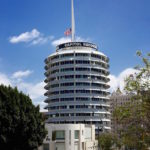
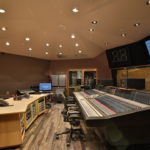
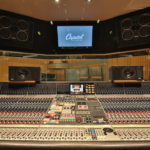
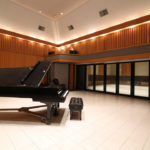
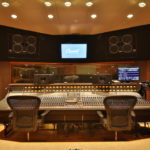
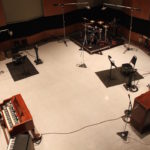
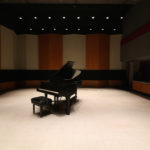
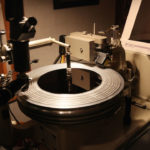
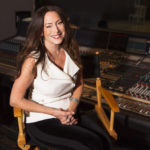

disqus_x2ds4Mu4tL
July 20, 2016 at 3:22 pm (9 years ago)Contrary to what Ms. Salvatore says, Capitol Studios did have outside clients before the early 1970s. Several independent labels, such as Verve, Dot and Mercury, used the studios in 1950s and 1960s.
Eric Seaberg
July 23, 2016 at 4:32 pm (9 years ago)My good friend, Art Kelm, is VP/Chief Engineer and was responsible for the studio re-builds, as well as console upgrades. A BRILLIANT MAN!!